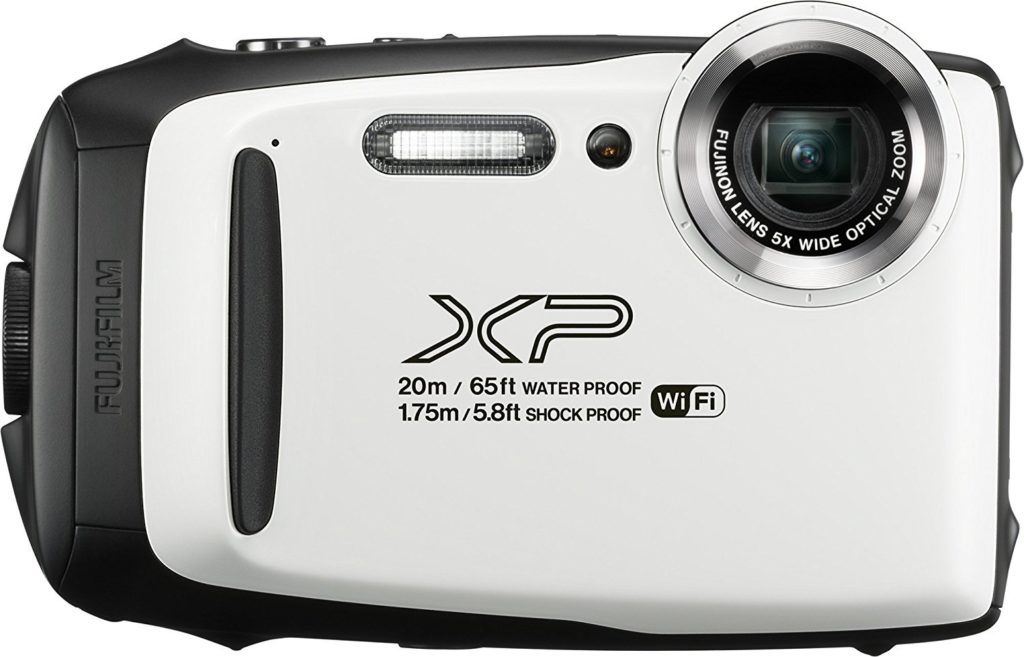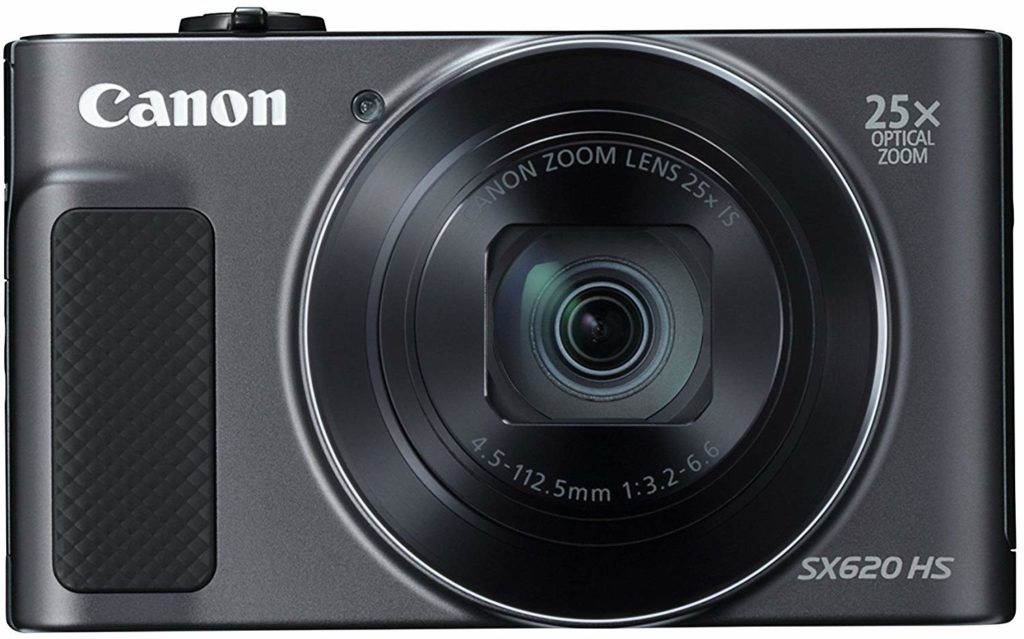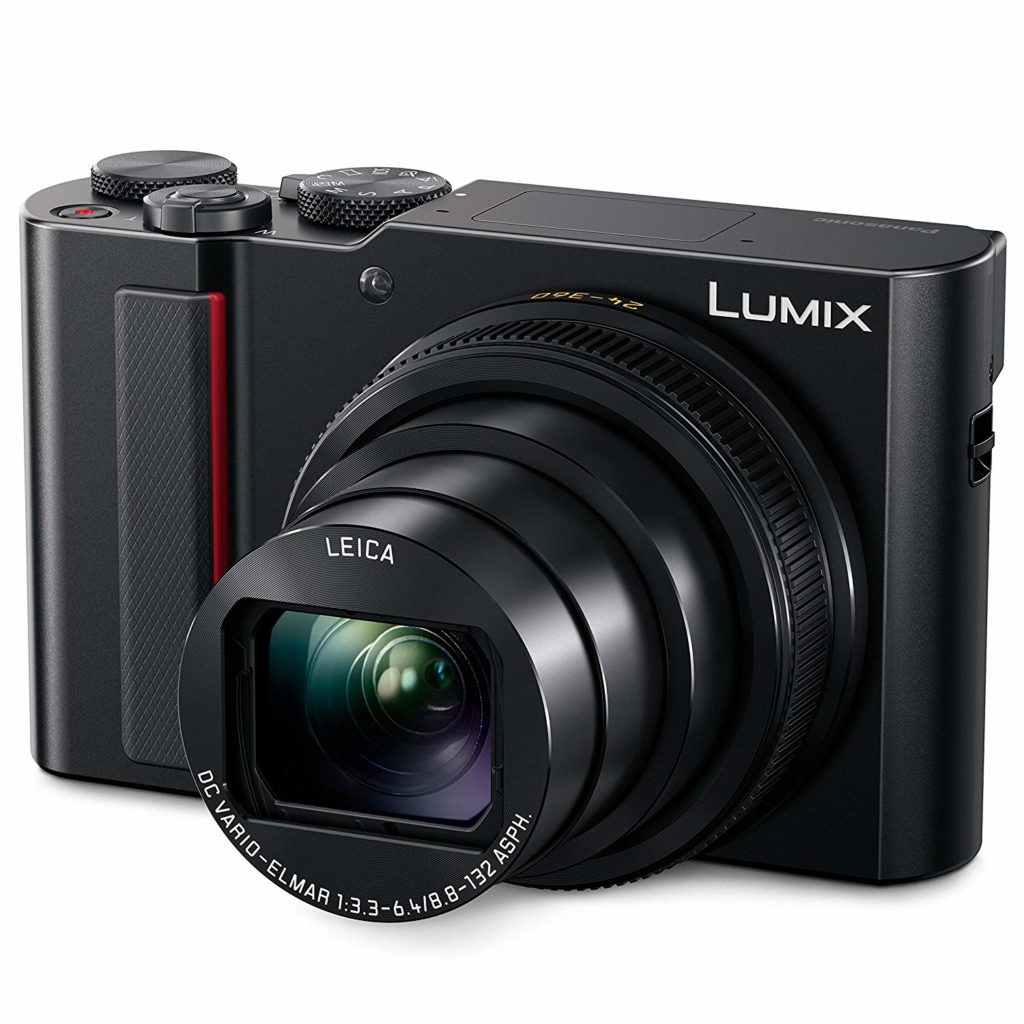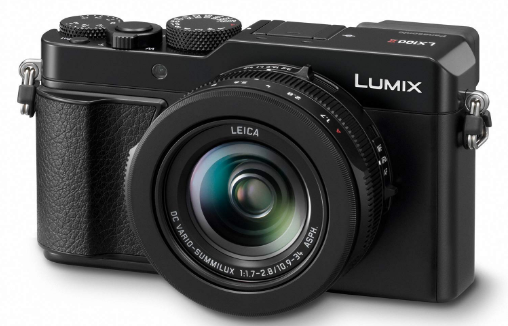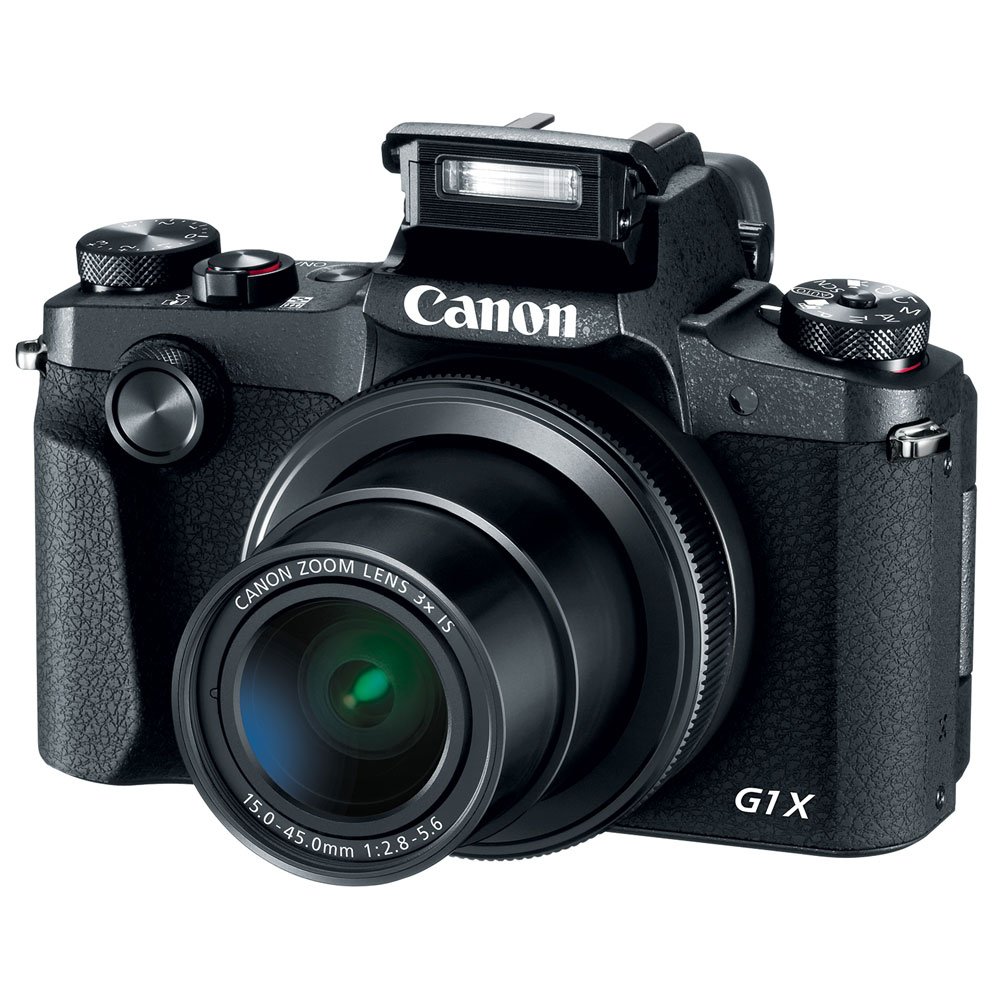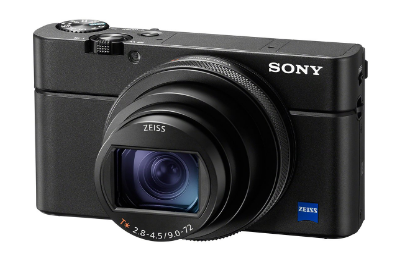The 9 Best Compact Digital Cameras Reviewed in 2020
Last Updated on
After reviewing nearly 25 popular models on the market, I made my selection of the what are the best compact cameras of the moment.If you want to get started too in the purchase of a compact camera, I invite you to read my helpful guide at the end of the article.
The Best Cheap Compact Cameras in 2020
The entry level of compact digital cameras is currently in big trouble. Indeed, nowadays, smartphones are able to replace them completely, for a price often lower overall (given all that can be done with a smartphone) and a quality sometimes much higher.
It is at the practical level that the camera will have to stand out from the smartphone, offering, for example, advanced connectivity options, or opportunities for use in extreme conditions. It is on these points that the three devices that I selected stood out.
Sony Cybershot WX220 : The Best Digital Camera
The first device of my selection is proposed by the giant Sony. And the least we can say is that the WX220 is a fairly standard model, and all in all rather simple. But despite its reduced price, it has a lot to offer.The 10x zoom, the 18.2 megapixel sensor, Wi-Fi and NFC at its disposal are among the features that allow some entry-level compact cameras to survive the advent of smartphones specialized in photography.
It is one of the most compact models of Sony: pretty much it fits in the palm of the hand. By cons, there are quite a few controls on the device itself, but I find the ergonomics well thought.
For example, it is via a small wheel around the “OK” button that you can navigate through the different options. This greatly facilitates the exploration of menus, which can become quite problematic with digital cameras.
The presence of NFC and Wi-Fi is a real plus, and their use is very intuitive. It can for example couple with a smartphone and perform an automatic export of photos and videos.
The Sony application (PlayMemories), compatible with Android and iOs, lets you compile albums and share them quickly. Since the last update, it even allows you, among other things, to control the camera remotely, which is particularly useful for group photos!
The picture quality is very good, with bright colors and full of character, without being too saturated. On the other hand, this finesse takes a hit in 360 ° panorama mode, where the whole seems a little more faded. One of the advantages of this device is that despite its low price, it has an optical stabilizer (the SteadyShot), which allows you to greatly limit blurry shooting.
Finally, if the 10x zoom is appreciable, it is the same with the 25mm focal length that allows beautiful wide angle shots!
In the end, the WX220 offers a lot of features and does not sacrifice – too much – image quality. An admirable performance for Sony, since it is, in fact, one of the best value for money in this comparison! Personally, I have a little crush on the pink version (girl power, I know!), But it is also very beautiful in black and gold. A design that does not spoil anything, therefore.
Fujifilm XP130 : The Fighter Compact Camera
The Fujifilm XP130 stands out from ordinary compacts with its colorful and “off-road” look, which is often appreciated at first glance.Released in early 2018, it consists, more than in a real new model available on the market, in an update of the XP120(oddly more expensive at the time of writing these lines), with (finally!) The adding Bluetooth to allow instant transfer of its images to any other device that has them.
Although a little less compact and a little heavier (207 grams) than the WX220, it fits easily into a pocket.The little extra of this device? It has been designed to withstand a photograph in any situation: it stays waterproof up to a depth of 20 meters, resists freezing up to -10 ° C, is protected against the infiltration of dust and sand, and survives to falls of up to 1.75 meters (if you are a basketball player, be careful not to let go!)
So, this is felt on the ergonomics, really adapted to all-terrain use.
Thus, the 5x optical zoom is designed so that it does not protrude from the camera even in the maximum zoom position, to stay protected from water and dust infiltration.
A security mechanism is provided at the location of the memory card compartment, and it is impossible to operate the device until it is in the locked position (so you are sure that you do not light it for a beautiful shooting in the water as long as it is not tightly closed).
Finally – especially! – all buttons are located on the back and the right side of the device, to allow a one-handed configuration. Moreover, they are all sufficiently marked and spaced to allow you to go between the menus even under water or with gloves.
By cons, even there was expected a little with a waterproof device, the screen is not touch.
In terms of image quality, we get a rather satisfactory rendering for this type of device (waterproof devices do not often have an exceptional result, their advantage being rather in the fact that they are usable almost everywhere) .
But in “normal” situation (vacation photos, etc.), the XP130 does a good job. In a good light, the colors stay bright and alive, without being saturated. In a lower light, by increasing the ISO, we obtain however a more pictorial rendering, but the overall impression of the detail remains.
The device has 7 levels of sensitivity, ISO 100 to ISO 6400, I recommend you not to exceed the ISO 1600 if you want to keep a realistic and non-pictorial.
Although most users will probably be satisfied with automatic recognition, the XP130 has 7 shooting modes, all easily accessible via the main menu.
With its 11 filters and its panorama mode (not the most powerful, but we do not ask more to a device of this range), you have enough to have fun and take pretty good pictures.
Canon Powershot 620HS : A Very Powerful Zoom Model Compact Camera
With a 25x zoom, an aperture faster than its competitors and 20.2 Mpx, the Powershot 620 HS is a heavyweight entry-level Canon.
More compact and lighter than its predecessor Powershot, this model of late 2016 is evidence of intelligent construction. At the rear is a 3-inch LCD screen, a quality and a pleasant resolution.
The use of the most basic modes could not be simpler. I just lament the three buttons on the back, whose usefulness is not obvious. They actually allow you to switch from one mode to another. The most generic is still the Smart Auto, completely autonomous.
But lovers of hacking will not be left out: via the main menu we have access to the most important settings. ISO, modes, white balance … It is also via this menu that you can access 6 different predefined filters.
Bluetooth and NFC connectivity provides access to a number of options for sharing or editing photos. For example, you can add a tag on a photo with GPS data.
And the image quality in all this? Again, at this price, we know that the Powershot 620HS will not be a beast of war. He is still a little better than Cybershot, and much better than Fujifilm. The ISO sensitivity ranges from 80 to 3200, with fairly good image quality retention at any level.
The 25x zoom mentioned above is an optical zoom. But know that it is possible, vi digital zoom, to reach the total dimension 50x, with a loss of quality that is very reasonable for a device in this range.
Overall, it is also not a device that shines particularly by its image quality. But the presence of many features, such as filters or settings, makes it a good use. Especially as the power of its zoom gives it a considerable advantage on smartphones. So we can say its one of the amazing compact digital cameras in 2019.
The Best Midrange Compact Cameras in 2020
From a certain price, we say goodbye to plastic. We want metal, cold, and a feeling of solidity. But it is also in this category that we will be able to specialize a little. Best camera? Best zoom? Videos at 4K?
Of course, it is the “compact” aspect that will generally suffer, but it is not 30 grams, if? So also here you can find info regarding Mirrorless Camera.
Olympus Tough TG-5 : The Best Midrange Camera
You know the famous Tough range! ? The TG-5, released in June 2017, is the latest version released on the market so far, and it really has something to seduce!
This time, the range combines its ultra-rugged and waterproof pocket size camera with stunning image quality, and a host of dramatic enhancements, such as the arrival of a new processor, double-glazed anti-fogging a Pro Capture mode and, last but not least , it is the first waterproof compact camera to support 4K / UHD definition for video.
In terms of design and ergonomics, we find ourselves facing a visibly robust device (the two visible screws provide at this level a certain resistance). Declined in black and red (personally it is in this version that I find the most charming), it is easy to take in hand with its handle that matches the shape of the lens.
At the back of the camera is a mode dial (with quick access to video mode, for example). On the hood, a second wheel makes it possible to modify the aperture, the exposure correction, or the choice of sub-mode.
The screen is neither tactile nor adjustable, but it has the great advantage of being doubled anti-fog, which allows a transfer of the device between extremely different conditions and possible use even in an environment wet.
Connectivity level, the Tough range swaps the USB mini-B for USB micro-B, which makes it compatible with a much wider selection of smartphones (we can perhaps hope a USB-C for TG- 6?). It also includes GPS and WiFi, allowing fast transfer of images via the dedicated application.
Finally, in real adventurer, it is accompanied, with its environmental sensor, all useful options such as the thermometer, the compass, the pressure gauge, the level indicator, the depth gauge and the altimeter.
The TG-5 has, as I told you, a new processor: the Truepic VIII. The latency and the speed of the auto focus are found frankly improved, and this finally allows to benefit from the burst mode in RAW format.
All this is of course felt on the image quality. Thanks to its improved image processing algorithm, the processor offers very high resolution in low contrast areas, even at low ISO speeds.
The sensitivity ranges from 100 to 12800 ISO, but the grain appears little by little from 1600 ISO. However, it is only 3200 ISO that we notice a desaturation of colors.
In terms of the modes provided by the camera, I particularly want to point out the Microscope mode, which can capture images of very small subjects just 1 cm away, and always with a stunning rendering and sharpness.
Pro Capture mode is a shooting mode that records a number of images before and after the shutter button is fully depressed, allowing the camera to capture exactly the desired shot.
Finally, on this model, waterproofness is assured up to 15 meters deep, and special modes such as the wide-angle underwater mode make it a must for diving enthusiasts who would immortalize their experience.
Panasonic Lumix TZ200 : The Most Classic competitor Camera
Panasonic’s Lumix range seems to me to be very well positioned to survive in this ultra-competitive market. Between the hybrid and the compact, the TZ200 has very interesting features, including, again, through the capture of 4K videos.
Despite a very powerful zoom (15x), this camera is very compact. It may no longer be possible to slip it into a pocket, but it will easily fit in your bag without feeling cumbersome.
The very elegant design (it’s a kind of constant at Lumix) offers a feeling of solidity and comfort. It also has a grip on the front and thumb, which ensures a better grip.
The screen, although it is not orientable, is, this time, endowed with tactile functionalities. The proposed interface is the one that has been deployed for hybrids in the range, and it is very intuitive: as on a smartphone, we can just designate the area to highlight, and it is folded!
The only problem: several touch keys unnecessarily clutter the sight. They are deactivatable but a purified vision by default would have been appreciated.
On the top of the device, we find the mode dial, the dial for adjusting the aperture or speed and the zoom control. It’s a real bonus to have access to many options from physical buttons – rather than navigate endless menus.
I also appreciate the presence of an EVF. This is the small magnifying glass that saves battery through a look of beef in the old rather than the screen. It also allows to have a more “organic” use of the camera, the old fashioned way.
At the level of the connection, it is possible to recharge the device via its USB port, which avoids having to walk with its battery charger.
WiFi and Bluetooth are at the rendezvous, and the mobile application Panasonic Image App is useful. By cons, it does not have the NFC, which is a bit of a shame for the speed of connection.
Its autonomy is however a little longer than its competitors, with a battery supposed to hold 300 photos – against about 220 for entry-level products.
One of the great things about this camera is of course the goal. It is possible to increase sensitivity up to ISO 1600 while retaining a very correct detail, with bright colors and a very satisfactory sharpness. But beyond that, the grain starts to be slightly apparent, although it still remains good at 3200 ISO. At 6400, however, the noise becomes really annoying. As much to tell you that the mode extended to 25600 ISO proposed by the device will be more rarely used!
The zoom is one of the great strengths of this model. The image retains exceptional quality even at maximum. By cons, it has a big defect: its opening lack of brightness, and it is difficult to obtain a background very vague. Nevertheless, its minimum focal length of 24 mm is a good asset for wide angle sockets.
Finally, it allows, like the Olympus Tough TG-5, to record 4K UHD videos with a quality that deserves to be highlighted. Unfortunately, you can not connect a microphone. It is therefore necessary to rely on the one that is built into the device, and that is not exceptional either: a pity!
In the end, I would say that a zoom so powerful on a small device is an attractive feature. The quality of the metal construction and the right setting options make it a competitive and enjoyable model to use!
Panasonic Lumix LX100 II : Image Quality Combined With The Perfection of Ergonomics
This is the youngest camera in this section, the Lumix LX100 II is the second version (the name suggests) of the 2014 model and it has kept its qualities (compactness, ergonomics, image quality) while integrating some novelties able to bring it up to date.
We are not going to lie, compared to the two previous devices, we jumped in the price range. But this is not only due to his younger age!
First of all, the quality of the finishes, the pleasant grip and the ergonomics that made the reputation of the first model. The LX100 II is easy to hold. The screen, this time, is tactile, and all settings can be done with one hand, everything to the right of the device.
The most basic settings are easily done using the two knobs, which I think is an advantage on all-digital devices, because it avoids getting lost too far in the menus.
With its 17 Mpx sensor and 24-75 mm lens, it offers a very good image quality. The focus is very fast and the camera is very responsive, except in low light. On the other hand, what is a pity is that it takes a little time to light up (in 2 seconds, the scene that you observe has all the time to be modified). Compared to the first model, the quality is comparable, but it is improved in low light, where it captures more details.
Its sensitivity range is 100 to 12800 ISO. Until 1600, noise management is impeccable. It is only from 3200 ISO that a degradation of the image becomes perceptible, but it remains usable up to 6400 ISO.
Its stabilizer, called Dual Stabilization, is very powerful, combining the stabilization of the lens and the sensor. This ensures good blur management, even if your arm is not quite stable.
The video, if not very developed, still allows UHD recordings, which is significant.
Finally, it acquires WiFi and Bluetooth, which is the norm, obviously, for devices recently released on the market.
In the end, it is an excellent device that is proposed here. It lacks a slight decrease in price to top the ranking, or a version III update (!) That would allow it among others to integrate more settings in video mode.
The Best High-End Compact Cameras 2020
Although they are part of the compact cameras, they compete easily with some hybrid cameras or SLRs, yet sold at almost the same price … Best devices in any category? It is not impossible.
Canon Powershot G1 Mark III X : The Best high-end Camera
The Canon Powershot G1 X Mark III is a revolution in the professional compact market, because it is one of the only ones to combine APS-C sensor and zoom. And if its price brings it closer to the range of SLRs, it has on the latter the advantage of being much more compact.
Aesthetically, this device is reminiscent of mini reflex, with a prominent viewfinder and a small handle. Its ergonomic design is inspired by the EOS range, but it is much lighter than the latter.
Its manufacture is of quality, studied for a resistance to the dust and the humidity.
The touch screen is orientable, precise and effective: it allows easy navigation through the menus and you can easily select a focus area with a simple touch.
Two knobs are present, on the top and on the back of the device, offering the advantage of being fully customizable: you have the freedom to create the compact 100% adapted to your needs!
Connectivity level, we find again the possibility of charging via USB plug (always handy when you want to travel light!). The unit also has an HDMI jack, a remote jack, WiFi, Bluetooth and NFC. As much to tell you that you are ready for a quick and easy sharing of your files!
The G1 X Mark III also features Dual AF Pixel auto focus and the Digic 7 processor, a combination that gives it excellent focus responsiveness. Moreover, with the image stabilizer, it remains clear, even with a shooting in motion.
The image quality, it is assured a combination CMOS sensor APS-C and optical zoom 3x. The image obtained is completely clear, detailed and colored.
On the other hand, at the level of the sensitivity, I advise against a use higher than 1600 ISO, beyond which the details diminish and the grain appears little by little. Nevertheless, the G1 X Mark III is quite the road facing SLR cameras, especially thanks to the precision of its zoom (where the user of a SLR will have to invest in a high-performance objective – and often expensive – this compact has the advantage of coupling big sensor and powerful zoom).
Finally, if there is one point where the G1 X Mark III disappoints, it’s about the video: it does not offer the 4K / UHD, but is content with the Full HD 60. So, further evidence that it was not the major concern of the manufacturer, the device has no microphone or headphone jack. In this price range, it’s quite unusual.
In the end, while remaining easy to use, the Canon PowerShot G1X Mark III performs the feat of combining compactness, APS-C sensor and zoom. It is, in my opinion, ideal for photographers looking for a multi function device that can replace their DSLR without loss of image quality, which will allow them to travel light.
Sony RX100 VI : A Quick and Efficient Focus
The Sony RX100 VI comes from a range in which the brand has forged a reputation, offering products that combine performance and quality in this sector of the compact, too often considered as mainly populated by undemanding amateurs.
Compact, it fits easily into any pocket. On the other hand, it is about the model of my selection whose handling is undoubtedly the least pleasant.
Indeed, there is first of all the lack of grip, and the pad at the back is much too small to ensure a comfortable and secure thumb grip. It is one of the best compact cameras for professional photographers in 2020.
Moreover, if this model, compared to the previous ones of the range, has a touch screen, it does not have less a multitude of keys of shortcuts. Numerous and very close to each other, they are all more difficult to handle (unless perhaps to have long manicured nails? This is not my case!)
The screen, it has the advantage of being rotatable 180 ° upwards and 90 ° down. But its interface is very busy, so we can not even use it for navigation between menus (it goes through the physical buttons).
And even with the “My Menu” customizable screen and the ability to customize shortcut keys, navigation remains complex. Again, an effort on the ergonomics and usability of the device would have been welcome …
Connectivity level, there is a rechargeable model via USB, which I have already highlighted the convenience of travel. It has traditional (in this range) Wifi, Bluetooth and NFC. There is also the possibility of setting the connection with a smartphone via a QR code.
The reactivity of the device is probably what made its reputation: Sony is advancing a focus of 0.03 seconds. I’m not sure that this time is accurate, especially in low light, but it is certain that the Sony RX100 VI has under the hood and will dazzle you with its speed.
Sensitivity level, it displays a range from 80 to 25600 ISO in extended mode. And there, surprise!, We can go up to 3200 ISO before meeting noises, and we can push beyond 6400 ISO without that it disturbs the dynamics of the images and the saturation of the colors.
All this, of course, is allowed – among other things – thanks to its wide focal range, its excellent zoom of 24 – 200 mm, its CMO sensor type 1.0 and its phase detection autofocus.
Finally, with the video we come back to a model that supports 4K / UHD, with a very effective stabilization even freehand. The recording of the sound, it is surprisingly good quality for a device of this type – but again, the lack of microphone catch is felt.
In the end, we find excellent and worst in this model. We will retain the image quality, whether in the photo or video, and the performance of auto focus. On the other hand, it clearly has ergonomic flaws that make it a moderately user-friendly device.
Fujifilm X100F : Modern in its Retro Look
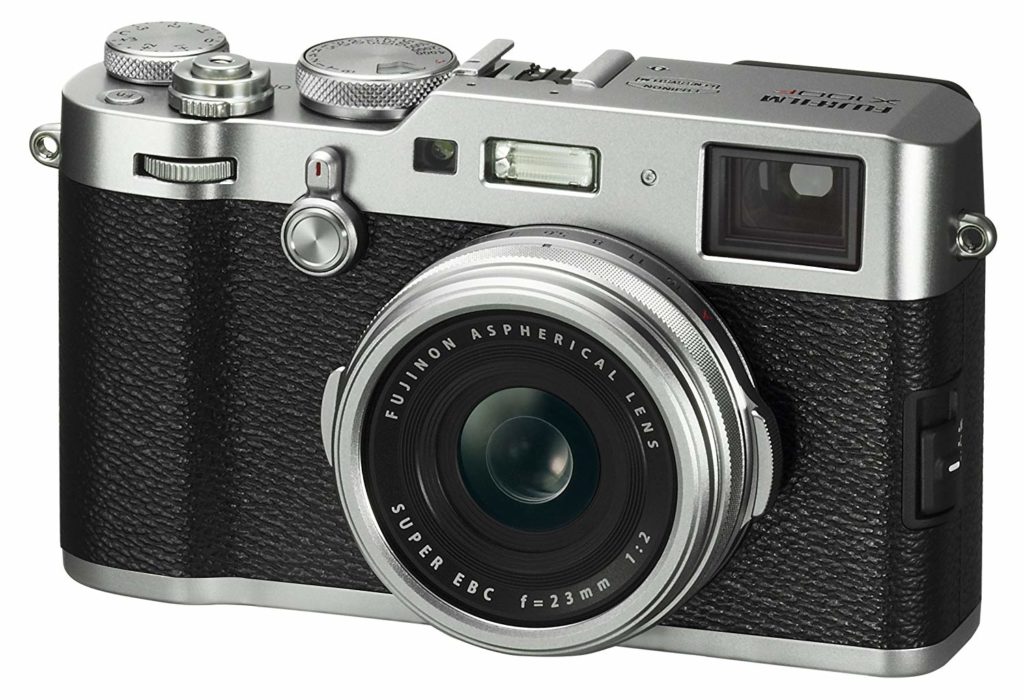
There is a lot to say about this compact camera, to say the least original. His retro style, coupled with recent technological feats, greatly enthused fans of photography.
The performance of sensors, already noted by professionals on the X100, here take a facelift. Thanks to a new and innovative technology, the sensor can dispense with color filters. The result ? Sharper, more beautiful, and more balanced images.
Whether on autofocus or image quality, the X100F competes with hybrids, although it is half smaller!
Its ergonomics goes hand in hand with its retro look. He has a more mechanical approach to photography. The buttons are mostly physical, and the device encourages the user to go through the EVF to control the shot. All this refers to an idea of 70s photography, more organic than digital cameras have to offer, especially compact! It’s just a pity that some buttons are sometimes a bit too small and close together for optimal fast management.Most of the pieces are metal, with a strong impression of solidity and density.
Yet he is far from being old! The autofocus is surprisingly fast, to the point of competing with excellent hybrid cameras. The efficiency – and the discretion – of the firmware is quite admirable.
It includes WiFi and an NFC chip. At all nine in retro. This camera is like a Tesla engine in a Cadillac.
Sensitivity side, it is probably the device of my selection with which you can mount the highest, because even at 12800 ISO, the result remains satisfactory (perhaps not for a work of precision graphics but for any user lambda, it’s perfect). In any case, there is nothing wrong with 6400 ISO.
The Fujifilm X100F has become a must. While it is very expensive, but its versatility can override much of the camera market, without the burden of a SLR.
So at the end i hope now you are well understand about some of best compact digital cameras in 2020 as i have provided to you best compact cameras reviews.


